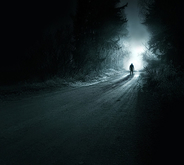This post is Part 4 of Photography Questions and Answers for Beginners. You can check our previous posts here:
- Photography Basics – Questions and Answers for Beginners – Part 1
- Photography Basics – Questions and Answers for Beginners – Part 2
- Photography Basics – Questions and Answers for Beginners – Part 3
What is Bokeh in Photography?
Photo Credit : Honeycorn
The word bokeh comes from a Japanese term that means blurring, typically in the context of ink-wash painting. In photography, bokeh has come to mean blurring in a selective-focus image. Good bokeh is smooth and almost creamy, while bad bokeh shows abrupt lines. How good or bad bokeh is, and the extent of the bokeh, depends on the lighting, the aperture you select and the optical qualities of your lens at a particular aperture.
Lenses that routinely produce great bokeh are very special and should be treasured. Generally, the best bokeh is created using shallow depth-of-field. Slight changes in your position, your point of focus, and the camera angle in relation to the subject and the direction of light can make a huge difference in bokeh, so it is worth experimenting with these things.
What is The Golden Hours in Photography?
Photo Credit : Prashanth Naik
Professional photographers refer to taking pictures in early morning and late afternoon as shooting during the “golden hours,” when deeper shades of red, orange and yellow light cast a beautiful glow to outdoor scenes. What’s more, deep shadows, created when the sun is low in the sky, add a sense of depth and dimension to our two-dimensional photographs.
From a financial standpoint, pictures taken during the golden hours sell better (they are golden) than pictures taken during midday. When the sun is higher in the sky, the light is cooler, giving pictures a bluish cast. It’s also less flattering, because landscapes look flat due to the overhead lighting.
What is Editorial Photography?
Photo Credit : Trondjs
Many people think of editorial shooting as photojournalism and as a specialty that is reserved for working journalists. But the genre of editorial photography has been the style du jour for other specialties including weddings and high school senior photography for several years, although the style is evolving. The appeal lies in the documentary aspect of capturing life and events as they unfold. Editorial shooting has the essential element of the narrative—visually telling the story as it unfolds in real time with no posing, props, or fabrications.
Editorial style includes elements from other types of photography, including environmental portraiture, street, action and sports, and documentary, but with an emphasis on a visual narrative that often supports accompanying text.
Unlike with most photojournalism, editorial assignments can be planned, scouted ahead of time, and shot at a measured pace. Editorial shooting ranges from photographing people, celebrities, concerts, and events to creating illustrative concept shots for feature articles on general interest topics, book covers, CD covers and liners, posters, and photo illustrations. The goal is to make images that define the spirit and character of the person or event—all without posing or staging the scene. To get defining shots, you need to understand the event or person, which means you need to be there, in position, and ready to shoot when each defining moment happens.
What is Butterfly Lighting?
Photo Credit : Rian Flynn
Butterfly lighting is that which falls near to and above the camera; high frontal key and fill lights that look almost like summer sunshine. Light from this direction casts a strong butterfly-shaped shadow beneath the nose of the subject on their top lip. This is then often moderated with a second, softer fill light lower than the main light. This lighting is sometimes referred to as Paramount lighting after the Paramount movie studios, which adopted this style of lighting for promotional pictures of its glamorous movie stars. Butterfly light works best with the female face; if the hair is short, care has to be taken not to light the tips of the ears unnaturally.
What is Dodging and Burning?
Photo Credit : Julius Tjintjelaar
Dodging and burning are both forms of local area exposure control. Dodging (sometimes called holding back) makes things lighter; burning or burning-in makes them darker. The words come from darkroom usage where a board with a hole in it is called a burning board; it is used to give extra exposure to one small area, thereby darkening that part of the black- and-white print. Burning can be done through a hole between your fingers. Dodging needs something to cast a shadow to hold back exposure and make the area lighter. Most photographers shape what they need from wire and card or tin foil – known as the ‘dodger’. The dodger, burning board or hand must be kept constantly on the move to give smooth tonal transitions.
Like the article? Be sure to subscribe to our RSS feed, follow us on Twitter and Facebook to stay up on recent content.
















